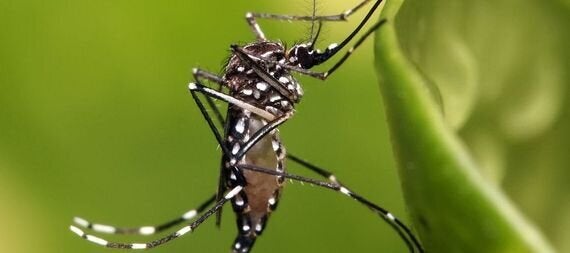
Photo copyright Muhammad Mahdi Karim
Today is ASEAN Dengue Day - a time for experts and the public to come together and raise awareness in the fight against dengue. In honour of the occasion, we have put together five interesting facts about this neglected yet rapidly growing disease.
1. Dengue is nicknamed 'breakbone fever'. People who catch dengue can experience a range of symptoms, including high fever, severe headaches, fatigue, vomiting and rashes. It can also lead to severe joint and muscle pain, which is where the nickname originates. In about five percent of cases, the disease can progress to more lethal variations called 'dengue haemorrhagic fever' or 'dengue shock syndrome', which can be fatal.
2. Dengue cases are rising at an alarming rate. The disease is typically found in tropical and sub-tropical climates, often in urban environments, and affects an estimated 50-100 million people every year. According to the World Health Organization, some countries such as Brazil are seeing as much as a three- or fourfold increase in incidence from year to year, while other countries experience decreases. The causes of these fluctuations are speculated upon widely and form the basis of extensive research.
Prior to 1970, only nine countries had witnessed epidemics. Now the number has grown to over 100 countries where the disease is endemic. Reported cases in the Americas, Southeast Asia and the Western Pacific in 2008 totalled 1.2 million, compared to 2.3 million in 2010. There have also been several reported cases of dengue in the United States, China and Europe, where the threat of an outbreak is growing. For the first time, dengue fever is being diagnosed in fever patients in Africa as alternative sources for fever are sought and malaria declines.
3. The disease is spread by the same type of mosquito as Zika. The main vector responsible for spreading dengue and Zika - the female Aedes aegypti - is active during the daytime, meaning that insecticide treated nets are not as effective as they are for malaria. This also means that any efforts to control the mosquito will have crossover benefits for dengue, Zika and other diseases such as yellow fever and chikungunya. Vector control methods for Aedes aegypti include emptying or removing containers or treating water with insecticides that are harmless to humans.
Well-implemented vector control programmes using existing tools and strategies are effective in reducing the transmission of dengue and other Aedes-borne diseases, such as targeted residual spraying, space spraying inside buildings, larval control including source reduction and personal protection measures.
Availability and dissemination of information on dengue for the public is also crucial. Some governments, such as Brazil's, are already pursuing public health campaigns to inform people how they can protect themselves from mosquito bites - for example, by disposing of standing water where mosquitoes breed. Communities can do a great deal to make their neighbourhoods safer when given sound advice, and are engaged in preventing illness and encouraging healthy behaviours.
We should be looking into new and innovative ways to control the dengue mosquito, too. One of Malaria Consortium's research studies focuses on the feasibility of introducing predators like guppy fish in standing water where mosquitoes breed. Another explores the use of insecticide-treated clothing to repel and kill mosquitoes and disrupt transmission of malaria, but could also prove useful to control Aedes.
4. There is no specific treatment. Whilst malaria can be targeted with antimalarial drugs (mainly artemisinin combination therapy), dengue has no specific treatment and is usually managed by addressing symptoms. The best method of control is through prevention by targeting the mosquito responsible.
5. Despite its growing incidence, dengue control efforts remain underfunded and neglected. The disease does not tend to generate as much interest from media, donors or international organisations in the same way as malaria or other high-profile illnesses. Dr Margaret Chan, Director-General of the World Health Organization, said that 'dengue ranks as the most important mosquito-borne viral disease in the world. Everywhere, the human and economic costs are staggering'. More financial support for the prevention and control of this disease, as well as further investigation into its growing incidence, are urgently needed.
